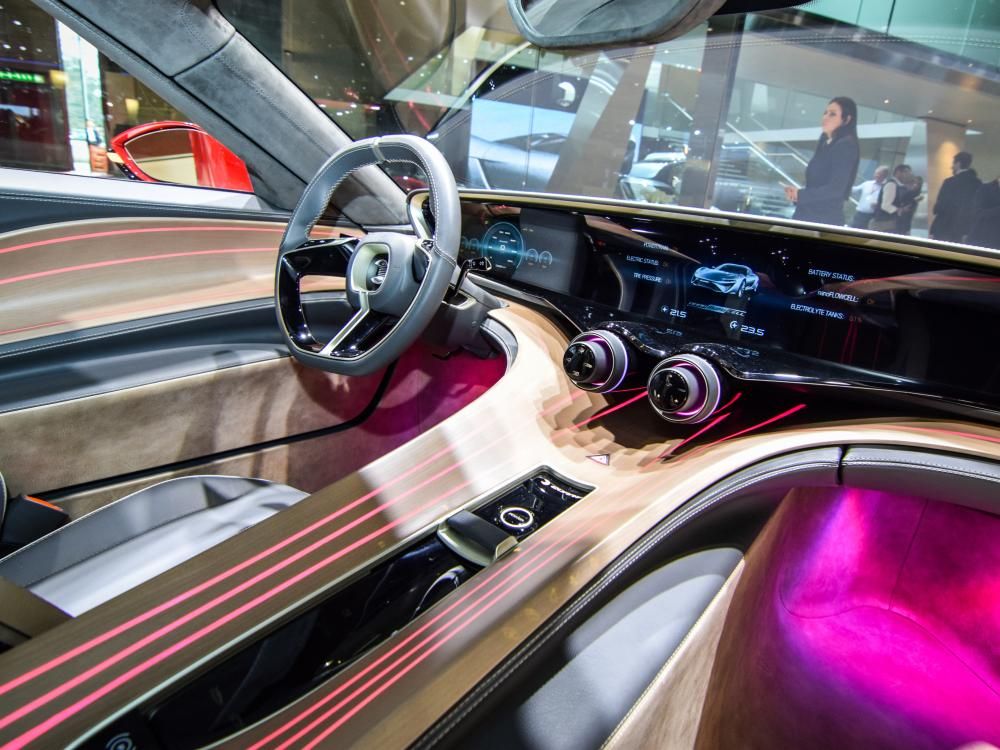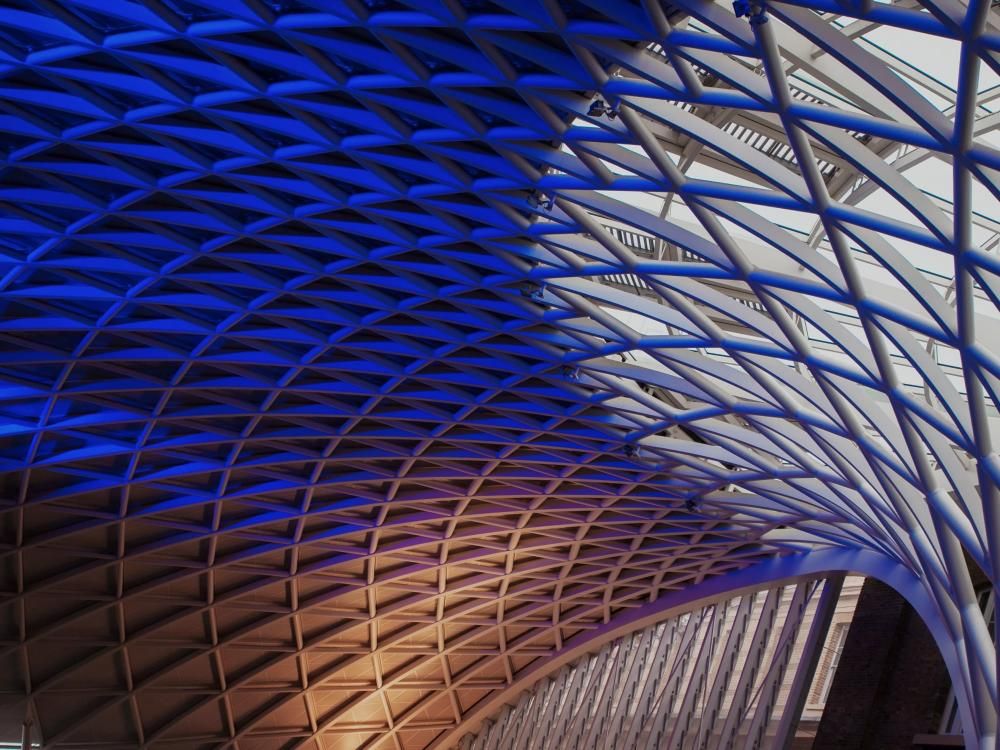
Artificial intelligence in architecture: 10 use cases and top technologies
August 15, 2023
- Home
- Artificial intelligence
- AI in architecture

Head of AI/ML Center of Excellence
Artificial intelligence in architecture enables engineers and architects to design, plan, and build structures more efficiently. With this technology at hand, architects can optimize designs for sustainability and cost-efficiency and come up with never-before-seen design solutions.
AI allows them to brainstorm and conceptualize their ideas. Moreover, AI enables architects to identify patterns that can inform efficient and environmentally friendly design decisions. A provider of AI software development for over 5 years, Itransition can help you get the most out of AI and bring your architectural workflows to the next level.
The role of AI in architecture
The UN predicts that the world population will reach 11.2 billion by 2100, which will inevitably lead to the need for more houses and public spaces and a more efficient city infrastructure. This trend, accompanied by rapid worldwide urbanization, pushes architects, urban planners, and engineers to develop solutions that accommodate this exponential population growth. Therefore, AI is becoming increasingly important in the field of architectural design and construction:
AI in the global construction market CAGR from 2022 to 2030
Verified Market Research
of construction companies intended to use AI in 2022
Peak’s Decision Intelligence Maturity Index
potential savings of total construction costs from advanced analytics
Deloitte
10 artificial intelligence use cases in architecture
Artificial intelligence in architecture has various applications, from generating innovative smart city concepts to interior design visualizations. Let’s explore how architects can use AI systems to their benefit.
Streamlining early-stage planning
Floor plans are integral documents that architects use to create a layout of a building. Using generative adversarial networks (GANs), architects can generate floor plans based on building dimensions and environmental conditions, minimizing the need for manual drafting. On top of that, machine learning models can adapt to an architect’s habits and methods over time, further improving workflows.
Improving architectural mapping
By augmenting any camera with computer vision, architects can autogenerate floorplans and CAD models by capturing images of existing physical spaces. This technology is currently being tested for use in architectural mapping, allowing architects to better understand an existing building before proceeding with construction or renovation work. By leveraging AI algorithms for this purpose, architects can dramatically reduce the time and cost associated with mapping out a new space.
Optimizing sketching
AI design solutions can play an important role in sketching and ideation by helping designers expand their creativity and generate more feasible ideas in a shorter time frame. Currently, it’s not uncommon even for professional architects to turn to publicly available AI tools like MidJourney to speed up sketching and concept generation. AI can quickly draft multiple options, however architects will have to choose the best one and polish it manually. AI can't create the final solution, but offers many versions that save time at the initial design stages. Still, human intervention is needed.
Streamlining compliance
Taking a design through multiple rounds of compliance checks can be tedious and time-consuming. AI can accelerate this process by automatically analyzing building codes and designs for compliance and detecting any potential issues before the design makes its way to a customer. With compliance automation, architectural firms can save time and resources, reduce compliance risks, improve user experience, and boost confidence in their designs.
Improving urban planning
Urban planning is highly complex and requires considering multiple factors, such as population density, road congestion levels, public transit options, green spaces, etc. With the help of AI, architects can create 3D models to simulate how a future urban environment will look and function amid real-world constraints. Such simulations enable planners to optimize decision-making and predict potential problems before they arise.
Optimizing building energy management
With the help of machine learning, it’s possible to optimize energy consumption in buildings. AI-based solutions can detect inefficiencies and suggest optimal settings for air conditioning, ventilation, heating, and lighting systems to ensure that a building performs at its best. What’s more, AI tools like LadyBug allow for assessing the thermal efficiency of the architectural project prior to construction.
Improving construction safety
Construction safety is a critical concern in the industry, and its importance is only increasing due to the escalating complexity of new projects. By using on-site computer vision-enabled cameras, it’s possible to detect safety breaches, like employees’ close proximity to heavy machinery, in real-time and immediately alert project supervisors. By feeding AI models with BIM data, construction safety officers can detect areas that are most likely to cause accidents and plan site movement to avoid them.
Enabling parametric architecture
AI-assisted parametric design has emerged as an innovative approach to creating complex building designs tailored to specific objectives. Based on various parameters, including building materials and spatial limitations, AI models can code a design by programming the geometric rules. Parametric design enables architects to ensure that each design meets specific criteria.
Automating documentation
Architecture projects typically require a great deal of paperwork, including contracts, permits, and other documents. AI-based solutions can automate this process by extracting relevant information from building plans and automatically generating the documentation needed for a project. This way, architects can ensure document accuracy while saving time on manual tasks.
Revealing safety hazards
Besides creating a part of the project, AI and machine learning models can also act as an additional validation system and detect flaws in engineering designs, such as weak spots in a structure due to defective materials or construction techniques. Also, by making AI models assess existing designs and structures, architects can identify risk areas before any building work begins.
Ready to leverage the power of AI for your next architecture project?
Examples of AI solutions for architecture
Autodesk Spacemaker
Autodesk Spacemaker is a comprehensive AI-based software that helps architects to streamline early-stage planning and site proposal generation. By combining data from building regulations, climate conditions, solar exposure, and more with a machine learning algorithm, Spacemaker can create multiple design options for architects in minutes. This allows architects to quickly identify and adjust the most viable option based on their preferences. By feeding its models with site data, Spacemaker can also solve problems related to a project’s environmental impact, automatically calculate the gross floor area, instantly assess noise and sun levels, and ensure regulation compliance.
Delve and Quintaint
Delve, a machine learning platform developed by Sidewalk Labs and DeepMind, is designed to help improve the design and construction of buildings. Built on Google Cloud Platform, Delve uses AI to generate urban development designs based on the budget, site constraints, building height limits, daylight benchmarks, and many other parameters. For example, Quintain, one of the largest real estate developers in the UK, used Delve to raise the project’s density and increase the unit yield of a large mixed-use development in Wembley Park, London. Notably, Delve was able to exceed Quintain’s original designs in every measure, mainly due to unorthodox architectural decisions. For example, by increasing building height in specific locations, the underlying machine learning model increased daylight access in specific parts of the site. Meanwhile, oddly shaped courtyard blocks helped achieve quality-of-life targets.
Data source: sidewalklabs.com — Optimizing Unit Yield While Balancing Quality of Life for Wembley Park
Arup Neuron
Arup Neuron is a smart building app that combines AI, IoT, BIM, and 5G to make buildings and cities more sustainable. Neuron gathers real-time data from IoT sensors installed in strategic places across buildings and processes this data with the help of AI. The Neuron Energy app analyzes heating, ventilation, and air conditioning data to help property managers accurately predict energy usage in advance, cut costs, and decrease negative environmental impact. One Taikoo Place is one of the first AI-enabled buildings in Hong Kong. Using the Neuron app, Swire Properties, the project developer, has successfully reduced energy use by 15%.

Image title: Arup Neuron’s historical data analysis
Data source: arup.com — Arup Neuron
DALL-E2
DALL-E 2 is an artificial intelligence program developed by OpenAI (ChatGPT developers) that generates images from textual descriptions. The program uses a deep learning algorithm to understand the meaning behind the text and then generates an image based on that understanding. While DALL-E 2 was originally developed as an art project, it has the potential to become a powerful tool for architects. With DALL-E 2, architects can quickly and easily generate visuals of their design concepts and share them with clients.
Midjourney
Midjourney is one of the most mainstream tools for generating designs. Equally admired by both architecture enthusiasts and professionals, Midjourney is able to produce high-quality renders from simple text prompts. Importantly, Midjourney allows users to regenerate and iterate on previous outputs, helping create highly tailored concepts. Similar to how ChatGPT can streamline writing, both DALL-E 2 and Midjourney serve as great ways for professional architects to jump-start their design process and save precious time at the beginning of a project. Given that these text-to-image AI generators can render concepts in a matter of minutes, architects can be a little braver when brainstorming ideas.
Microsoft and Daniel McDuff
Architect Jenny Sabin has led the creation of a large-scale AI-powered installation at Microsoft’s campus in Redmond, Washington. The sculpture is made of 895 3D-printed nodes knit together in hexagons by fiberglass rods and photoluminescent yarn. The installation, named Ada after Ada Lovelace, the English mathematician, is an example of “embedded intelligence.” Cameras and microphones installed across the building collect data about facial expressions and voice tones to translate it into the abstract language of shapes, light, and color. Daniel McDuff led the project team that developed the AI platform processing the data and creating a shifting color gradient for Ada to produce. Though it has been dubbed "dystopian," McDuff believes his emotion-tracking technology could provide solutions in healthcare or caregiving. Importantly, people working at Microsoft can opt out of their personal data processing.

Image title: AI installation at Microsoft’s campus
Data source: archpaper.com — Jenny Sabin's installation for Microsoft responds to occupants' emotions
Emerging technologies in architecture to complement AI
BIM
Building information modeling (BIM) is an advanced form of 3D modeling which creates a digital representation of physical and functional characteristics of buildings. BIM allows architects to automate repetitive tasks and manage their entire design process from conceptualization through construction in one integrated platform, enabling them to make better decisions faster and more efficiently.
3D printing
3D printing offers architects the simplest way to generate prototypes and assess the feasibility of design concepts. This significantly accelerates workflows and allows the detection of potential issues that would otherwise remain hidden until the construction phase.
AR
Augmented reality is a technology that overlays digital information and 3D graphics over physical objects. Architecture firms can use AR to help clients make a decision by showing them exactly how the building will look before construction begins.
VR
Virtual reality can help further immerse architects’ clients and other stakeholders into the design process. By using a VR headset, they can explore the space in detail and see how different materials look before any physical construction has taken place.
IoT
IoT is a network of devices connected to the internet that can communicate with each other. IoT technology is used in architecture to enable smart buildings, allowing for greater control over energy usage and system performance. IoT also can enable predictive maintenance of heating, ventilation, and air conditioning (HVAC) systems.
AI vs architects: will AI replace human professionals?
The integration of AI will significantly affect architectural and design professionals in the near future. Despite a potential disruption, AI can’t completely replace human creativity and problem-solving capabilities, at least for now. AI is best used in tandem with human architects, as it can augment their skills and help make better decisions faster by considering data that is too complex or time-consuming for humans to analyze on their own. While AI can generate what appears to be the final product, it lacks the understanding of real-world constraints and nonlinear creative processes that define these professions. Rather than fearing this inevitable change, professionals must adapt their existing skills to integrate with AI, ultimately paving the way for a new era of innovation and creativity in architectural design.
Challenges of implementing AI in architecture and potential solutions
Challenge
Example
Potential solution
Black box
Black box AI is the lack of visibility into how an algorithm reaches its conclusion. This can lead to unintended consequences as algorithms tend towards optimization based on training data instead of desired outcomes and can produce results with no explainable logic behind them.
Black box AI is the lack of visibility into how an algorithm reaches its conclusion. This can lead to unintended consequences as algorithms tend towards optimization based on training data instead of desired outcomes and can produce results with no explainable logic behind them.
Essentially, many applications of AI in architecture involve a two-step process of feeding relevant data to an AI model and getting finished designs at the end of the process. With such an approach, an architect can't decipher what exactly the underlying model is doing.
First, you should pick the right metrics to evaluate the result, which still won't allow you to move AI into the white-box field. However, it will give you a better understanding of how the system reacts to any changes and get direction for improving the system. It's also important to divide the pipeline into definitive steps, allowing the user to intervene and have better control over the final outcome.
Architecture is risk-averse
While the architecture industry is open to innovation, certain AI apps can be too risky for an average architecture firm. The AI's ability to suggest unconventional construction methods or use uncatalogued materials can pose significant legal and business risks for architectural firms.
While the architecture industry is open to innovation, certain AI apps can be too risky for an average architecture firm. The AI's ability to suggest unconventional construction methods or use uncatalogued materials can pose significant legal and business risks for architectural firms.
In most cases, architects leave the construction of basic structures like retaining walls to contractors. If AI comes up with a never-before-seen approach for holding back soil, architects should provide contractors with elaborate documentation on methods and materials for implementing it. This automatically places a significant legal risk on the architects, which most firms would understandably avoid in the absolute majority of cases.
AI-based systems can not be used for decision-making. At their current level, most AI-based systems should be used as an assistant or an optimization tool for certain operations. Therefore, humans must make the final decision in this industry.

Building a better future with AI in architecture
AI presents a major opportunity for architects to revolutionize their workflows, make more informed decisions, and design innovative solutions. While poised to become an invaluable tool in the architecture industry, AI must be approached with caution. Architects should acquaint themselves with the technology while remaining aware of its potential pitfalls. With sustained education and practice, the architecture community can leverage AI to build better future homes and the cities we live in. Ready to take the next step? Take advantage of AI's potential in architecture by getting started with Itransition's AI-driven tools and services. Our experienced team of engineers and data scientists can help you assess your needs and develop custom solutions to fit them.

Start harnessing AI today to stay ahead of the curve
FAQ
How is AI used in architecture?
AI is used in architecture to help designers create more efficient, innovative, and creative solutions. AI can be applied for creating virtual 3D renderings and models, optimizing use of materials, searching for new design trends and patterns, automating time-consuming calculations like lighting simulation or energy consumption estimates, and analyzing vast amounts of data to create new insights.
Can AI replace architects?
No, AI cannot completely replace architects. While AI can help streamline and automate certain aspects of the design process, a human architect is still needed to interpret the results, make decisions on how to proceed with a project, and ultimately complete the job.
What is generative design for architecture?
One example of AI in architecture is generative design which uses algorithms to generate a range of optimized solutions based on input parameters. This type of AI can be used for anything from creating efficient structural designs to developing entire cityscapes.

Insights
AI in education: top applications, real-life examples, and adoption tips
As artificial intelligence continues to evolve, it is impacting education. Find out how AI is changing the way we learn and the benefits it brings to students.

Insights
Machine learning for anomaly detection: a technical overview
Explore 11 use cases, types, pay-offs, and best practices of machine learning for anomaly detection.

Insights
Machine learning in agriculture: use cases and applications
Machine learning is changing the agriculture industry. Explore the most popular use cases, from yield prediction to crop management.

Insights
Machine learning in logistics: technology breakdown & 10 use cases
Find out how machine learning is transforming logistics and supply chain, including its top use cases, benefits, technologies used, and implementation tips.

Insights
AI in the automotive industry: use cases, success stories & adoption guidelines
Explore key use cases, payoffs, and real-life examples of AI in the automotive industry, along with common adoption challenges and tips to address them.

Insights
Machine learning in manufacturing: key applications, examples & adoption guidelines
Learn how machine learning can help manufacturers to improve operational efficiency, discover real-life examples, and learn when and how to implement it.

Insights
Artificial intelligence in cybersecurity: applications & the future
Learn how AI is used in cybersecurity to detect and prevent threats, what the future holds for the technology, and its implementation tips for companies.